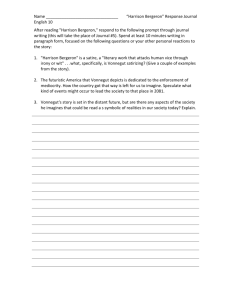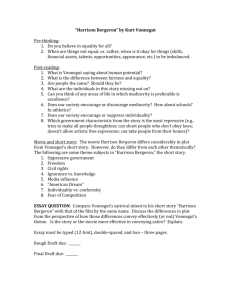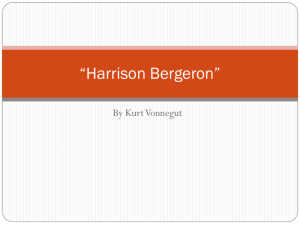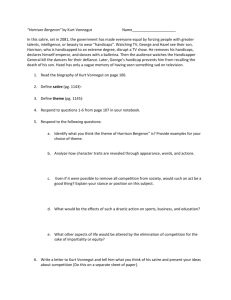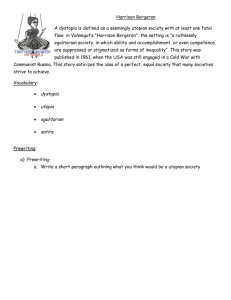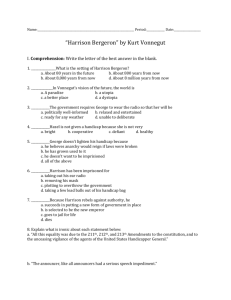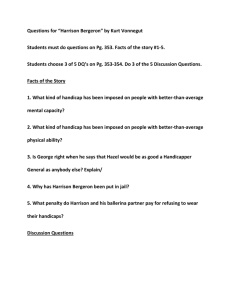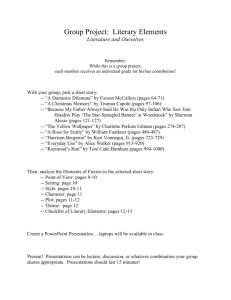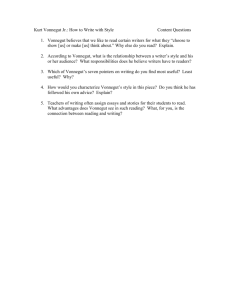Harrison Bergeron & Examination Day
advertisement
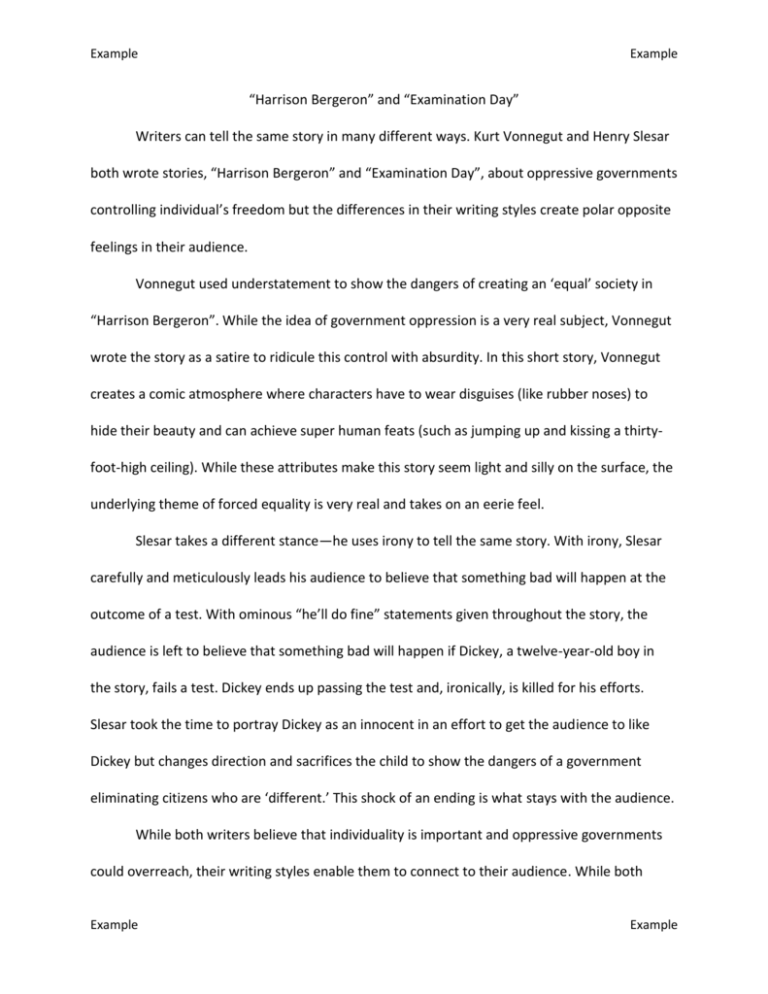
Example Example “Harrison Bergeron” and “Examination Day” Writers can tell the same story in many different ways. Kurt Vonnegut and Henry Slesar both wrote stories, “Harrison Bergeron” and “Examination Day”, about oppressive governments controlling individual’s freedom but the differences in their writing styles create polar opposite feelings in their audience. Vonnegut used understatement to show the dangers of creating an ‘equal’ society in “Harrison Bergeron”. While the idea of government oppression is a very real subject, Vonnegut wrote the story as a satire to ridicule this control with absurdity. In this short story, Vonnegut creates a comic atmosphere where characters have to wear disguises (like rubber noses) to hide their beauty and can achieve super human feats (such as jumping up and kissing a thirtyfoot-high ceiling). While these attributes make this story seem light and silly on the surface, the underlying theme of forced equality is very real and takes on an eerie feel. Slesar takes a different stance—he uses irony to tell the same story. With irony, Slesar carefully and meticulously leads his audience to believe that something bad will happen at the outcome of a test. With ominous “he’ll do fine” statements given throughout the story, the audience is left to believe that something bad will happen if Dickey, a twelve-year-old boy in the story, fails a test. Dickey ends up passing the test and, ironically, is killed for his efforts. Slesar took the time to portray Dickey as an innocent in an effort to get the audience to like Dickey but changes direction and sacrifices the child to show the dangers of a government eliminating citizens who are ‘different.’ This shock of an ending is what stays with the audience. While both writers believe that individuality is important and oppressive governments could overreach, their writing styles enable them to connect to their audience. While both Example Example Example Example techniques occur at the climax, the different techniques change the mood of each writer’s respective story. Vonnegut’s use of understatement is for the reader who can read between the lines. While this story has a happy-go-lucky feel on the surface, the reader is confronted with a child being murdered in front of his parents. And, within seconds, his parents forgetting all about it. While Vonnegut includes a dark, disturbing undercurrent to his story, Slesar’s use of irony is like a punch to the face when Dickey is killed. Each style keeps the writer’s respective stories relevant and entertaining years after they were written. Both Vonnegut and Slesar show that everyone isn’t, or should be, equal in their stories “Harrison Bergeron” and “Examination Day”. While their message is important, the techniques they used when writing the stories are what still resonates with audiences today. Example Example
